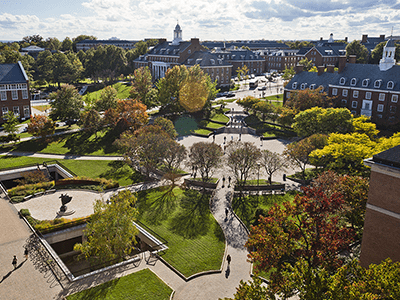Campus Facilities Plan

Working with a team of planning consultants and the university community, the University of Maryland Facilities Management has developed a new Campus Facilities Plan. The plan serves as a tool to help establish a continuing framework to guide strategic growth and development across campus.
Final approval of the plan came on November 10, 2023.

Goals of the Campus Facilities Plan
- Establish a physical planning framework that will promote future stewardship, orderly growth, efficient use of capital and operating resources, and appropriate development of available land consistent with the strategic plan, mission, and values of the institution.
- Be responsive to the institution's current and projected needs and be flexible to accommodate unexpected changes for capital improvements on campus. The plan will be data-driven, inclusive, visionary, and responsive to internal and external stakeholder needs.
- Develop a comprehensive plan, integrating planned development with utilities infrastructure, site, landscape, sustainability, and multi-modal transportation circulation that will enhance the connectivity of campus facilities and the University’s surrounding communities.

The Process
The entire process was divided into three phases over 18 months.
Phase I: Data Gathering and Assessment, March - September 2022
Collect and analyze existing plans, studies, and data. Gather input from campus and surrounding communities.
View the Campus Facilities Plan Phase I Summary.
Phase II: Draft Plan Development, October 2022 - February 2023
Synthesize Phase I data. Develop conceptual plans to address the needs outlined and input received in Phase I.
Phase III: Final Plan Approvals, February - November 2023
Incorporate Phase II feedback of concept plans. Develop Final Plan Draft

University and Community Involvement
Because the Campus Facilities Plan impacts students, faculty, and staff as well as the surrounding College Park Community, the Campus Facilities Plan Steering Committee solicited input through a variety of engagement opportunities, including open forums for university and community stakeholders, surveys, and discipline-specific work groups.
